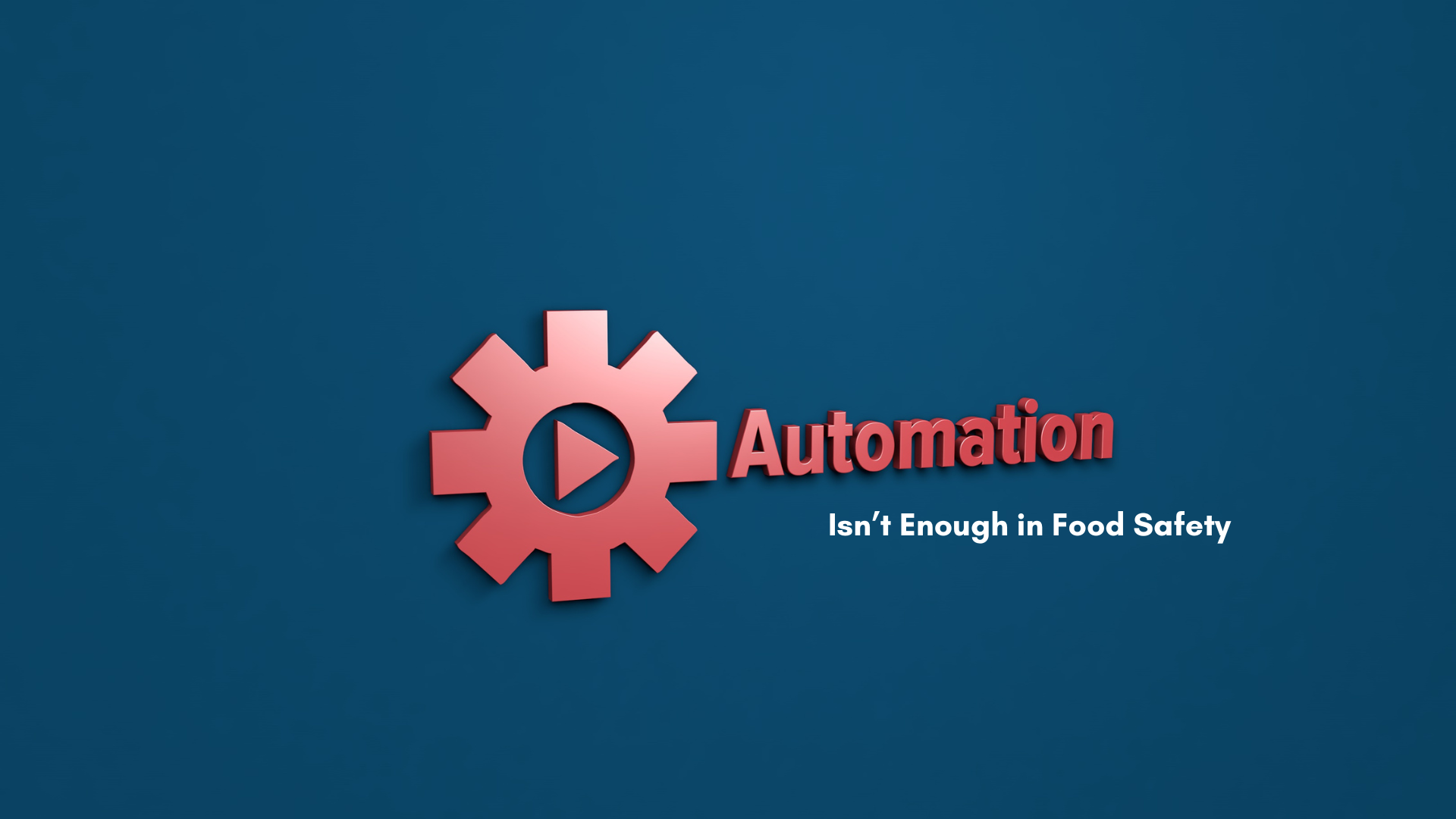Why Automation Isn’t Enough (And What It Misses)
Automation, Isn’t Enough in Food Safety.
Automation Is Powerful — But It’s Not a Silver Bullet
Food manufacturing has come a long way. We’ve automated production lines, digitized maintenance logs, and synced our systems through ERP and CMMS platforms.
But here’s the truth: food safety failures still happen.
Why? Because while automation helps you plan and schedule, it can’t ensure people are doing the right thing, the right way, at the right time. And that’s where the risk lives — in the space between intent and action, often called “the last 10 feet.”
What Automation Actually Does Well
Let’s give automation its due — it’s helped food manufacturers scale, standardize, and reduce costs in big ways.
ERP systems help plan production runs, track inventory, and manage purchasing
CMMS platforms schedule workorders and log repair history
Automation tech keeps lines moving with precision, ensuring consistent bake times, fill weights, or sealing pressure
All of this reduces variability and helps meet strict standards across the supply chain.
But there’s something all of these tools assume: that frontline tasks are being done the right way, every time. And that assumption can be dangerous.
Where Automation and CMMS Tools Fall Short
Here’s what ERP and CMMS systems can’t tell you:
Was the task actually done, or just marked complete?
Was the sanitation step done in the right spot, at the right time?
Did the new hire skip a step during the allergen changeover?
These systems show what’s supposed to happen. They don’t show what actually happened.
Example:
A CMMS might schedule a sanitation task for a mixing vat at 2:00 PM. The task gets marked complete. But under pressure, the team rushes and skips one of the rinse steps. Nobody notices — until a QA hold or customer complaint forces a costly investigation.
Now imagine this happens during a week when the lead sanitation worker is off and a new team member is covering the shift. The equipment was cleaned — but not to spec. And the CMMS system has no way of knowing that.
That’s the danger of relying only on checklists or dashboards: they give you a false sense of security unless verified in real time.
The Human Side of Risk: Why Execution Still Matters
No matter how automated your lines are, your people are still responsible for the last 10 feet.
They:
Sanitize and clean equipment
Handle changeovers between allergens
Inspect finished goods before shipping
Monitor cold chain integrity on loading docks
And humans — even great ones — make mistakes.
According to the FDA’s Managing Food Safety Manual, the top causes of foodborne illness outbreaks include:
Improper food temperatures
Inadequate cooking
Contaminated equipment
Poor personal hygiene
Source: FDA HACCP Guide, pg. 6
These aren’t system problems. These are execution problems.
How Digital SOP Execution Tools Fill the Gap
That’s where tools like Command Center come in — to bridge the gap between what’s planned and what’s done.
Command Center doesn’t replace your ERP or CMMS. It layers on top to:
Guide team members through each critical SOP, one verified step at a time
Use NFC smart tags to confirm location, time, and user before a task can be marked complete
Instantly alert supervisors if a task is skipped or delayed
Create an audit-ready trail of real-time activity that proves compliance
Think of it this way:
ERP tracks what’s ordered.
CMMS tracks what’s scheduled.
Command Center tracks what actually happened, and proves it.
This kind of real-time verification is especially useful during:
Shift changes
New employee onboarding
High-volume periods
Audit prep and QA reviews
It doesn’t slow down production. It safeguards it.
Frequently Asked Questions (FAQ)
Q: Does Command Center replace our CMMS or ERP system?
A: Not at all. Command Center is designed to complement your existing systems. While CMMS handles scheduling and ERP handles planning, Command Center ensures the task gets done right, by the right person, in real time.
Q: How does this work on the plant floor?
A: Workers scan NFC smart tags at each location. Tasks are guided step-by-step in the app, and they can’t be marked complete unless verified. It’s fast, easy, and adds no extra admin burden.
Q: How do supervisors use the data?
A: Supervisors can see at-a-glance which tasks are in progress, missed, or late — and receive alerts for critical gaps. It’s real-time visibility without having to chase clipboards or wait for daily logs.
Q: What’s the setup like?
A: Command Center is a no-code solution. It can be live in days, not months, and scales easily across teams and locations. Our team handles the onboarding — no IT team required.
Final Thought: Automation Tracks the Plan. Execution Protects the Brand.
You’ve invested in smart systems. You’ve streamlined your processes.
Now it’s time to protect those investments by making sure SOPs are followed on the floor — not just in theory, but in practice.
Because food safety lives and dies in the last 10 feet.
Teams that combine automation with real-time execution tracking don’t just reduce risk — they unlock peace of mind. They move faster, waste less, and pass audits with confidence.
Want to make sure your automation is backed by real-time SOP execution?
Learn how Command Center gives you visibility, confidence, and control — where it matters most.
Rebecca Wormleighton
Co-Founder
Rebecca.Wormleighton@Zendelity.com







